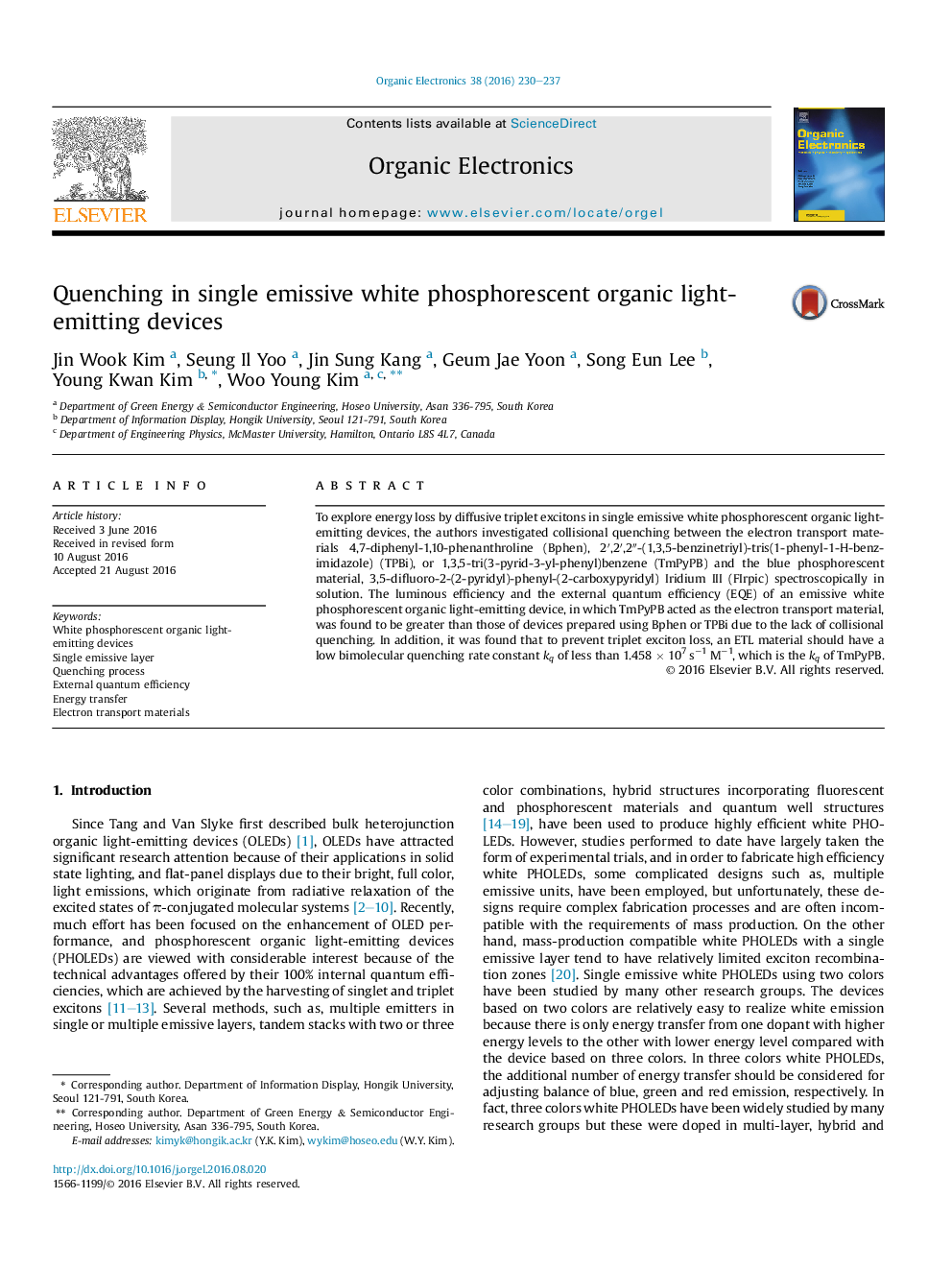| Article ID | Journal | Published Year | Pages | File Type |
|---|---|---|---|---|
| 1264165 | Organic Electronics | 2016 | 8 Pages |
•The performances of single emissive white PHOLEDs with various ETLs were analyzed.•Performances were closely related to bimolecular quenching rate constants of ETLs.•Collisional quenching occurs when excitons of dopant contact with quenchers.
To explore energy loss by diffusive triplet excitons in single emissive white phosphorescent organic light-emitting devices, the authors investigated collisional quenching between the electron transport materials 4,7-diphenyl-1,10-phenanthroline (Bphen), 2′,2′,2″-(1,3,5-benzinetriyl)-tris(1-phenyl-1-H-benzimidazole) (TPBi), or 1,3,5-tri(3-pyrid-3-yl-phenyl)benzene (TmPyPB) and the blue phosphorescent material, 3,5-difluoro-2-(2-pyridyl)-phenyl-(2-carboxypyridyl) Iridium III (FIrpic) spectroscopically in solution. The luminous efficiency and the external quantum efficiency (EQE) of an emissive white phosphorescent organic light-emitting device, in which TmPyPB acted as the electron transport material, was found to be greater than those of devices prepared using Bphen or TPBi due to the lack of collisional quenching. In addition, it was found that to prevent triplet exciton loss, an ETL material should have a low bimolecular quenching rate constant kq of less than 1.458 × 107 s−1 M−1, which is the kq of TmPyPB.
Graphical abstractFigure optionsDownload full-size imageDownload as PowerPoint slide
